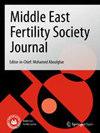A retrospective comparative study of double cleavage-stage embryo transfer versus single blastocyst in frozen-thawed cycles
IF 1.3
Q4 REPRODUCTIVE BIOLOGY
引用次数: 0
Abstract
This retrospective study aimed to compare the outcomes of day 3 double embryo transfer (DET) with single blastocyst transfer (SBT) during frozen embryo transfer (FET) cycles. A total of 999 women below the age of 38 years who underwent FET at Malaysia’s KL Fertility and Gynaecology Centre from January 2019 to December 2021 were analyzed. Patients with autologous eggs were recruited in the study. All the eggs were inseminated by intracytoplasmic sperm injection. The embryos were vitrified on day 3 cleavage-stage or blastocyst stage with Cryotop® method. The FET was performed following natural cycle (NC), modified natural cycle (m-NC), or hormone replacement therapy (HRT) cycles. The NC and m-NC groups received oral dydrogesterone for luteal phase support. There were no statistical differences in the rates of positive pregnancy, clinical pregnancy, and ongoing pregnancy between the two groups. However, implantation rates were significantly higher in the SBT group (50.1% versus 37.6%, p < 0.05). The day 3 DET group had significantly higher multiple pregnancy rates (28.7% versus 1.1%, p < 0.05). Subgroup analysis of embryo transfers performed following NC, m-NC, or HRT cycles showed similar results. This study suggests that SBT is the better choice for embryo transfers as it had higher implantation rates and its pregnancy rates were similar to day 3 DET. The SBT also significantly reduced the incidence of multiple pregnancies without compromising pregnancy rates.冷冻解冻周期中双分裂期胚胎移植与单囊胚移植的回顾性比较研究
这项回顾性研究旨在比较冷冻胚胎移植(FET)周期中第3天双胚胎移植(DET)与单囊胚移植(SBT)的结果。研究分析了2019年1月至2021年12月期间在马来西亚吉隆坡生育与妇科中心接受FET的999名38岁以下女性。研究招募了拥有自体卵子的患者。所有卵子均通过卵胞浆内单精子注射进行人工授精。胚胎在第 3 天分裂期或囊胚期用 Cryotop® 方法进行玻璃化处理。胚胎移植是在自然周期(NC)、改良自然周期(m-NC)或激素替代疗法(HRT)周期后进行的。自然周期组和改良自然周期组均口服地屈孕酮以支持黄体期。两组在阳性妊娠率、临床妊娠率和持续妊娠率方面没有统计学差异。然而,SBT 组的植入率明显更高(50.1% 对 37.6%,P < 0.05)。第 3 天 DET 组的多胎妊娠率明显更高(28.7% 对 1.1%,P < 0.05)。对 NC、m-NC 或 HRT 周期后进行的胚胎移植进行的分组分析显示了相似的结果。这项研究表明,SBT 是胚胎移植的更好选择,因为它的植入率更高,妊娠率与第 3 天 DET 相似。SBT 还能显著降低多胎妊娠的发生率,同时不影响妊娠率。
本文章由计算机程序翻译,如有差异,请以英文原文为准。
求助全文
约1分钟内获得全文
求助全文
来源期刊

Middle East Fertility Society Journal
REPRODUCTIVE BIOLOGY-
CiteScore
2.80
自引率
0.00%
发文量
32
审稿时长
45 weeks
 求助内容:
求助内容: 应助结果提醒方式:
应助结果提醒方式:


